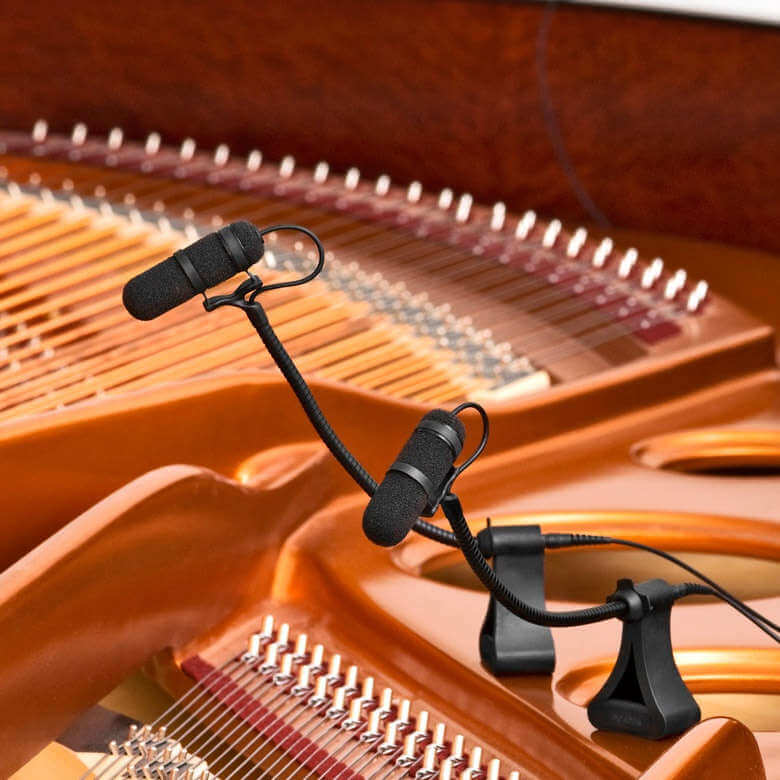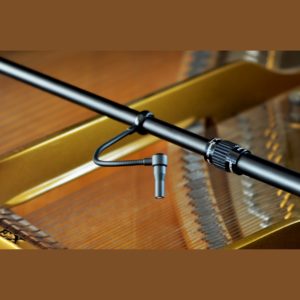Choosing the Right Piano Mic

Over the years of designing AVL systems, I have had the pleasure of walking into many churches of all denominations, shapes and sizes. It is always a treat because I get to see the wide variety of equipment used, both new and especially old. Because digital pianos are quite good these days, I don’t get to see acoustic pianos used in services much anymore. But when I do, I get quite curious about how they position microphones to capture the sound.
The Right Mic for the Right Piano
During these many church visits where they are using an acoustic piano, I have seen such a wide variety of microphones and techniques used. Admitted by the client many times, they didn’t know what they were doing and just experimented until they achieved the sound they desired to the best of their ability, with the equipment they had. And for that, I always commend them. Because at the end of the day, that is exactly what you need to do! The exception of course, could possibly be the selection of microphone used. Sure, there are guidelines for the proper technique, but having a microphone with the right characteristics and features is important in supporting those techniques to get the sound you desire.

Like any other acoustic instrument, each piano has its own sound, its own resonant characteristics, and thus requires a little bit of tweaking beyond the initial guidelines of microphone type and placement. In a lot of these churches I saw vocal mics being used, but still achieved a decent sound. Yet, the client still admitted they knew it wasn’t the best option and so we would discuss their options further.
The two most common techniques are an X-Y pattern facing front to back of the piano or up closer to the hammers positioned to capture left to right. At the end of the day, regardless of which method you choose, you will need to play with the positioning to find the sweet spot for your sound.
There are stereo microphone kits available on the market that allow you to mount the mics to the sound board rather than on a microphone stands, which helps with keeping the positioning of the microphones consistent from performance to performance. These are also great because typically they are a matched pair, which just means the microphones were manufactured to have the exact same response as the other. When selecting directional microphones having a matched pair is ideal, but not critical.
Condenser or Dynamic?
When it comes to whether you need a condenser or dynamic microphone, most engineers will prefer a condenser mic as it has a greater degree of sensitivity and frequency response across the spectrum. I have used large diaphragm dynamic microphones in this application quite successfully as they are also less susceptible to feedback. If you are in a loud, live stage environment, or just simply need more control over your gain, it may be worth experimenting with a good pair of large diaphragm dynamic microphones.
This same overall application and principle can be applied to both upright and grand pianos. In the studio, these techniques can be taken a step further. You can typically get more room to play with and achieve a much more natural sound for the recording, as well as integrating room mics, etc. But in a live environment, your microphone selection will be driven by experimenting to find what ultimately works best in your space.
Can you throw a couple generic vocal mics into a grand and accomplish a good sound? It depends on many things. In a pinch, sure, but if you are able to buy, rent, or borrow some microphones more appropriate for the application and your specific environment, you will be much better off.
Erik Beyer
AV and Technology Consultant for Av Bend
